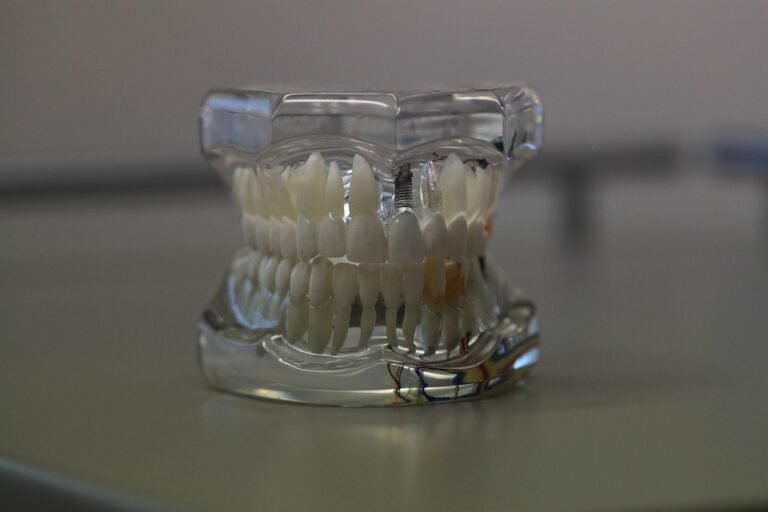What are the benefits of using bio-inspired dental materials
Okay, so I’m a dental student, and we’ve been talking about bio-inspired materials in class lately. Things like enamel-like composites and dentin-mimicking polymers. The professor keeps mentioning their potential, but he’s not really drilling down (pun intended!) into why they’re better than the conventional materials we’re already using.
So, specifically, I’m wondering what the actual, concrete benefits are. Is it just marketing hype, or are there real advantages in terms of:
- Longevity of restorations? Do they last longer and resist chipping/fracturing better?
- Biocompatibility? Are they less likely to cause allergic reactions or sensitivity?
- Aesthetics? Do they look more natural and blend better with existing teeth?
- Bonding strength? Do they bond more effectively to the tooth structure, reducing the risk of microleakage?
- Resistance to bacterial adhesion/biofilm formation? Are they inherently more hygienic?
- Reduced risk of secondary caries? Does the improved bonding/biocompatibility help prevent decay around the restoration margin?
- What specific bio-inspired materials show the most promise right now? Are there any particular research breakthroughs I should be looking into?
I’m trying to understand the tangible benefits for patients and the long-term viability of these materials. Thanks!
Answer
Bio-inspired dental materials offer a range of potential benefits, primarily stemming from their design mimicking the natural structure and properties of teeth and surrounding tissues. These benefits impact aesthetics, functionality, longevity, and biocompatibility.
Improved Mechanical Properties:
- Enhanced Strength and Fracture Resistance: Natural tooth enamel and dentin possess unique microstructures that contribute to their remarkable strength and resilience. Bio-inspired materials aim to replicate these structures, such as the ordered arrangement of hydroxyapatite crystals in enamel or the collagen fibril orientation in dentin. By mimicking these arrangements, these materials can exhibit superior strength and resistance to cracking and chipping compared to conventional dental materials like composites or ceramics.
- Optimized Elastic Modulus: The elastic modulus, or stiffness, of a dental material should ideally closely match that of the tooth structure it is replacing or supporting. Discrepancies in elastic modulus can lead to stress concentrations at the interface between the material and the tooth, potentially causing debonding, fracture of the restoration, or damage to the adjacent tooth structure. Bio-inspired materials can be designed with tailored elastic moduli to minimize these stress concentrations, promoting better integration and long-term stability. For example, dentin-inspired materials may incorporate polymers or other ductile phases to reduce their stiffness and better match the elastic modulus of dentin.
- Wear Resistance: Natural teeth exhibit a remarkable ability to withstand the constant wear and tear of mastication. Bio-inspired materials can incorporate features that enhance their wear resistance, such as the addition of hard nanoparticles or the creation of self-lubricating surfaces. Mimicking the hierarchical structure of enamel, with its tightly packed hydroxyapatite prisms, can also improve wear resistance by reducing the propagation of wear tracks.
Enhanced Aesthetics:
- Natural Appearance: The optical properties of natural teeth are complex and contribute significantly to their aesthetic appeal. Enamel is translucent, allowing light to penetrate and scatter within the tooth structure, creating a vibrant and natural appearance. Bio-inspired materials can be designed to mimic these optical properties, including translucency, opalescence, and fluorescence. By incorporating pigments, nanoparticles, or specialized polymer matrices, these materials can better replicate the natural color and light transmission characteristics of teeth, resulting in more aesthetically pleasing restorations.
- Improved Color Stability: Conventional dental materials can be susceptible to staining and discoloration over time, which can compromise their aesthetic appearance. Bio-inspired materials can be formulated with improved color stability by incorporating pigments that are resistant to degradation or by using polymer matrices that are less prone to staining. Furthermore, the use of surface coatings or treatments can help to protect the material from discoloration.
- Lifelike Texture and Surface Finish: The surface texture of natural teeth is characterized by subtle variations that contribute to their natural appearance. Bio-inspired materials can be fabricated with similar surface textures by using advanced manufacturing techniques, such as microfabrication or 3D printing. These techniques allow for the creation of materials with lifelike surface topography, enhancing their aesthetic appeal.
Improved Biocompatibility:
- Reduced Toxicity: Bio-inspired materials often utilize biocompatible building blocks that are naturally found in the body, such as calcium phosphate, collagen, or silk. This can reduce the risk of adverse reactions or toxicity compared to conventional dental materials that may contain potentially harmful components.
- Enhanced Cell Adhesion and Proliferation: The surface properties of a dental material can significantly influence its interactions with surrounding tissues. Bio-inspired materials can be designed with surface modifications that promote cell adhesion, proliferation, and differentiation. For example, the incorporation of cell-adhesive peptides or growth factors can enhance the integration of the material with the surrounding bone or soft tissues. This can lead to improved healing and reduced risk of inflammation or infection.
- Promoted Remineralization: Natural teeth have the capacity to remineralize damaged areas, a process that is facilitated by the presence of calcium and phosphate ions in saliva. Bio-inspired materials can be designed to promote remineralization by incorporating calcium phosphate nanoparticles or by releasing calcium and phosphate ions over time. This can help to repair early caries lesions and prevent the progression of tooth decay.
Improved Functionality:
- Self-Healing Capabilities: Some bio-inspired materials are designed to exhibit self-healing properties, which means they can repair minor damage or cracks without external intervention. This can be achieved by incorporating microcapsules containing healing agents that are released when the material is damaged, or by designing the material with inherent structural features that promote crack closure. Self-healing materials can significantly extend the lifespan of dental restorations and reduce the need for frequent repairs or replacements.
- Antimicrobial Properties: Bio-inspired materials can be modified to exhibit antimicrobial properties, which can help to prevent the growth of bacteria and reduce the risk of infection. This can be achieved by incorporating antimicrobial agents, such as silver nanoparticles or chitosan, into the material matrix or by coating the surface of the material with an antimicrobial film. Antimicrobial materials are particularly useful in dental applications, where the risk of bacterial contamination is high.
- Stimulation of Tissue Regeneration: Beyond biocompatibility, some bio-inspired materials actively promote tissue regeneration. These materials, often used in bone grafting or guided tissue regeneration procedures, are designed to release growth factors, provide a scaffold for cell attachment, or stimulate the differentiation of stem cells into bone-forming cells. This leads to faster and more complete healing of bone defects.
Longer Lifespan and Reduced Maintenance:
- Improved Bond Strength: Bio-inspired materials often incorporate components or surface treatments that enhance their bond strength to tooth structure. Stronger bonding reduces the risk of microleakage, which can lead to secondary caries, pulpal inflammation, and restoration failure. This can lead to longer-lasting restorations and reduced need for frequent repairs or replacements.
- Decreased Risk of Fracture: As mentioned above, improved mechanical properties, particularly fracture resistance, contribute directly to the longevity of bio-inspired restorations. Materials that are less prone to fracture require less frequent replacement.
- Reduced Wear: Improved wear resistance extends the functional lifespan of a restoration and reduces the need for adjustments or replacement due to wear-related issues like loss of occlusal contact or altered aesthetics.
The development and application of bio-inspired dental materials is an ongoing area of research, and the full potential of these materials is still being explored. However, the benefits outlined above suggest that bio-inspired materials have the potential to revolutionize the field of dentistry by providing clinicians with more durable, aesthetically pleasing, biocompatible, and functional restorative options.


